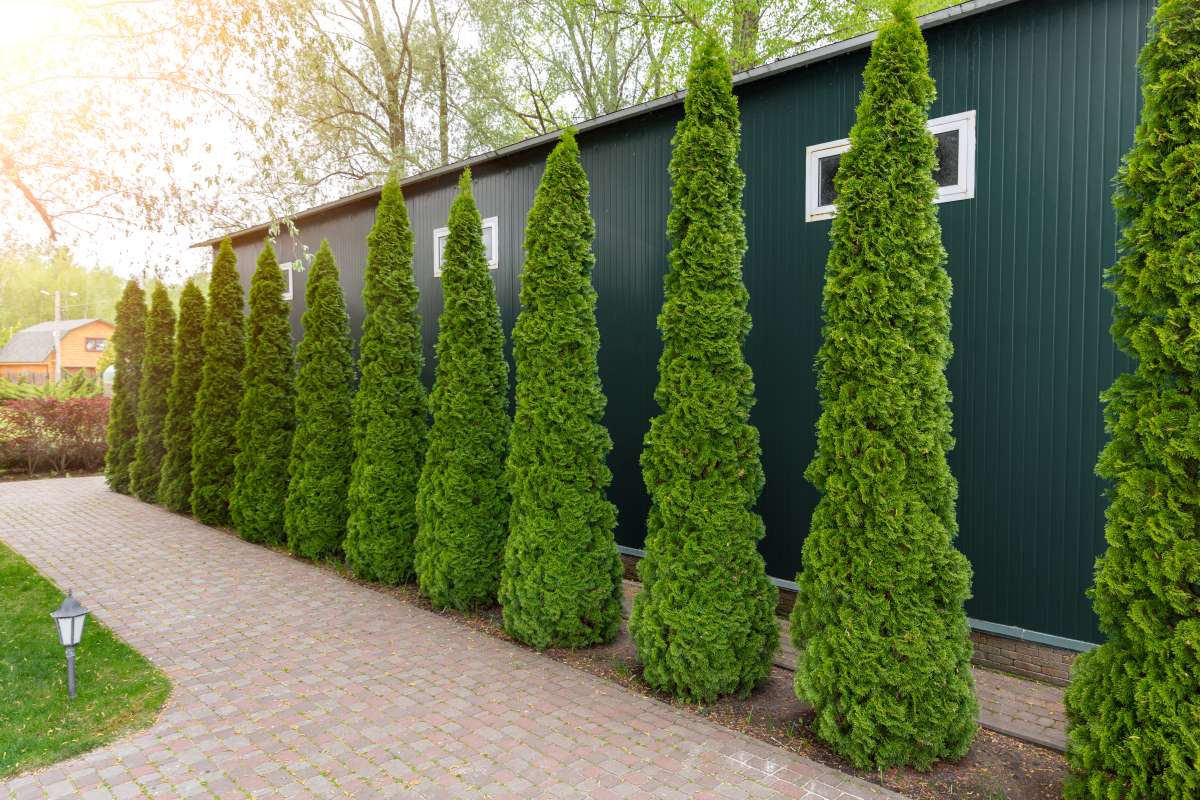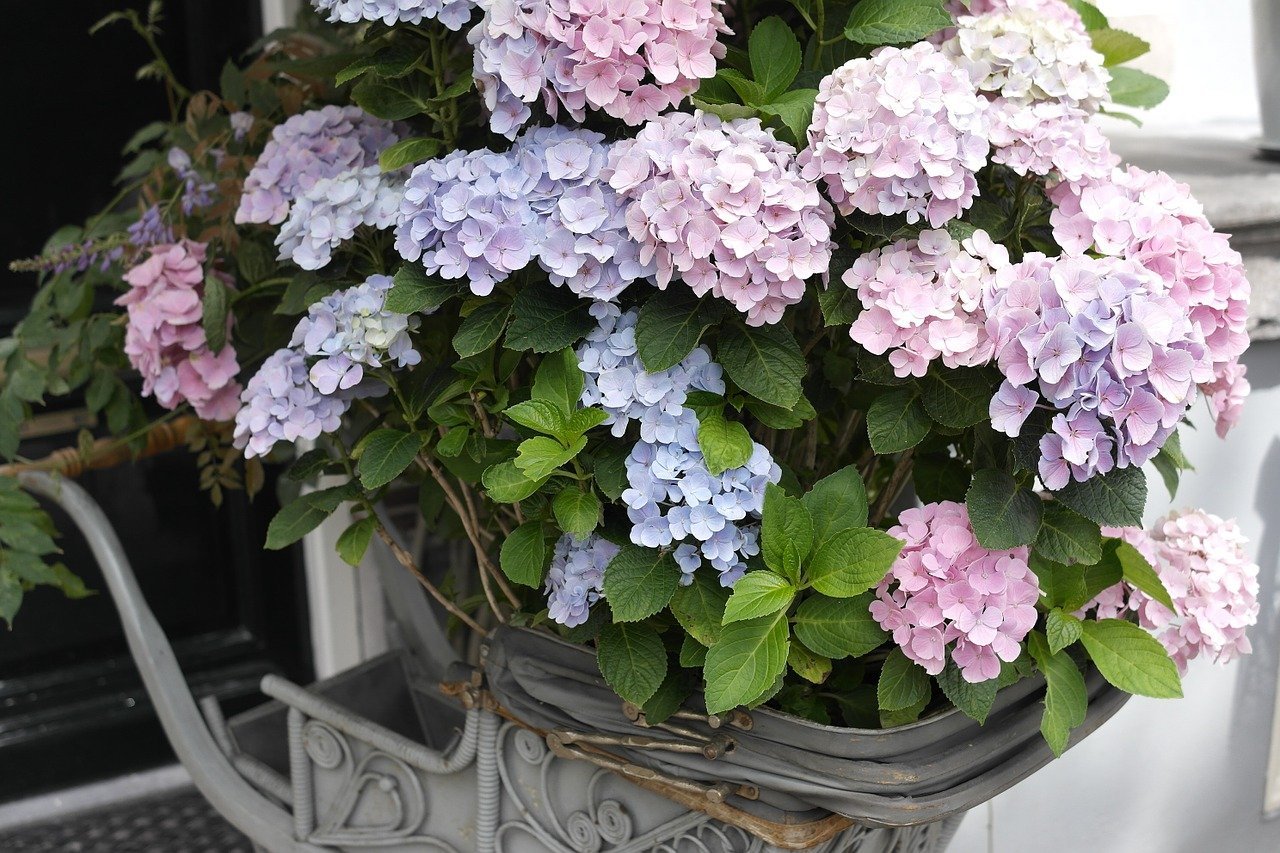Trees are among the most notable plants in any landscape. But growing and ... Read More
- Home >
- 17 Lattice Fence Ideas For Inspiration
17 Lattice Fence Ideas For Inspiration
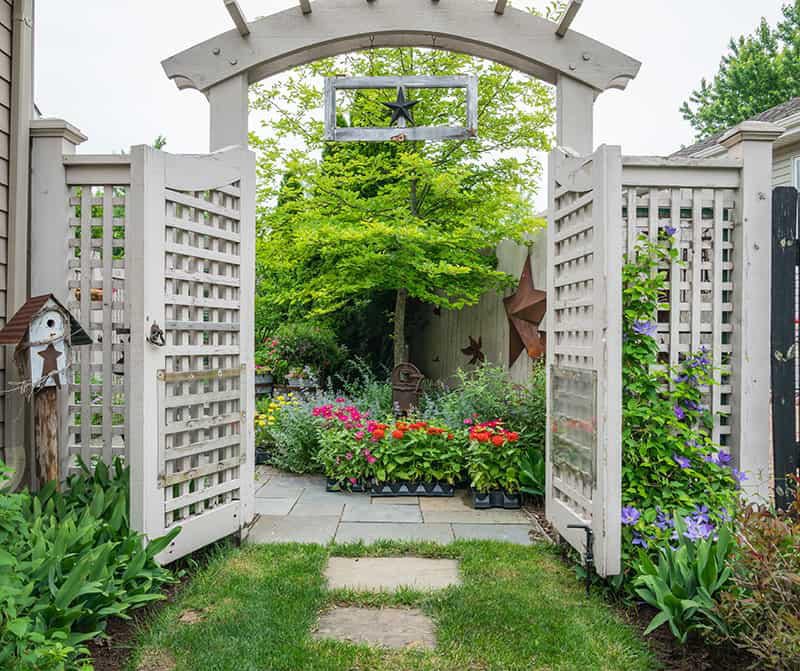
If you’re looking for an alternative to a solid garden fence or wall around the boundary of your property, then lattice panels could be a good option. These have the advantage of being less expensive than most fence or brick options, and because they are not solidly constructed, they allow light through their gaps and enable you to see through to the spaces beyond. If this sounds like something that could work in your situation, consider these following lattice fence ideas to help rouse your imagination.
Lattice Fence Ideas
1. Low Lattice Gate
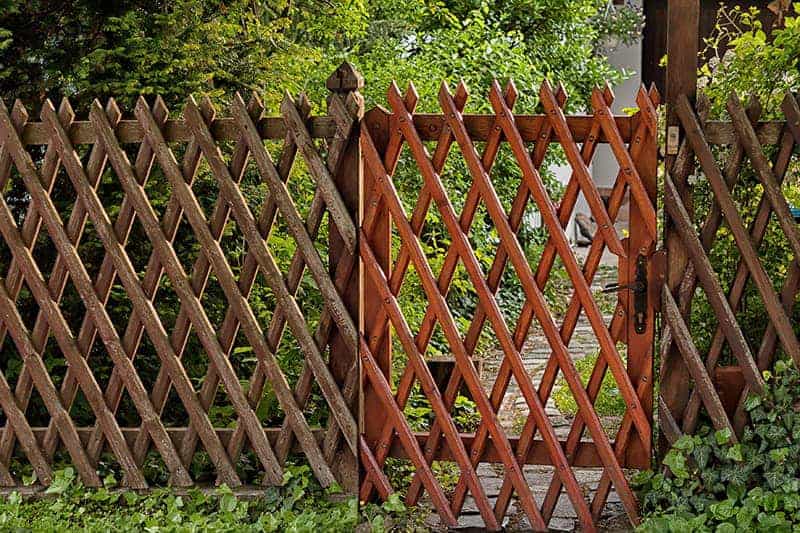
If you’re looking for a way to make your yard secure without blocking out your view, then a lattice gate is a great solution. Gates made from wooden lattice are strong enough to keep pets and children secure inside the boundary of your property, while also still allowing in light and outside views. A lattice gate can be a good way to prevent you from feeling like you are blocking out the world with a solid gate, and by allowing in the view of the outside, you can help to keep your garden looking expansive rather than hemmed in.
2. Trailing Foliage Trellis
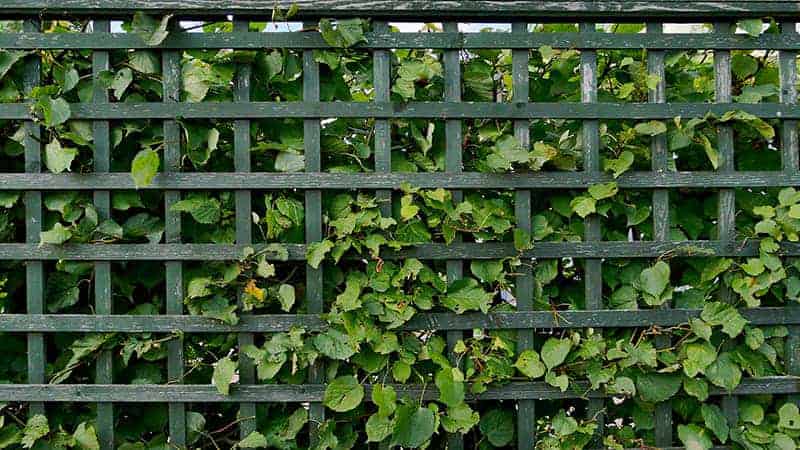
You can use trellis to help create a living wall, which can then function as both a fence and also a decorative object. To produce a living wall with a trellis, use an open weave lattice and paint it green so that it fades into the background of your plants’ foliage. Select a vigorous climbing or trailing plant, and allow it to grow amongst the lattice until it is completely covered. A dense climbing plant will have the ability to create a solid green fence, while a plant with more sparse growth will allow light through the lattice. Either option will create a fantastic fence, depending on your requirements.
3. Lattice Fence Topper
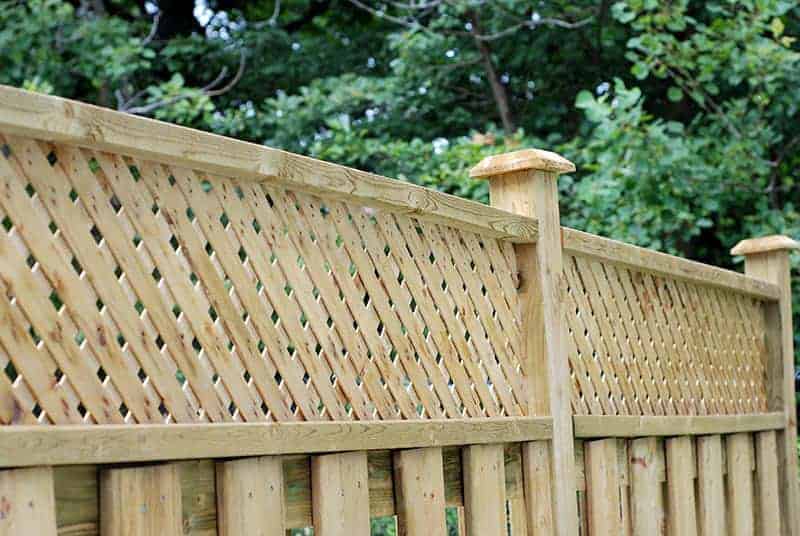
If you want a tall fence but don’t want to entirely block out your view and the light, then a good compromise is a medium-sized fence with a lattice board attached to the top to create a high fence with gaps. This type of fence will let you see out while you are standing, but while sitting down in your yard, you will have complete privacy. You can select different types of lattice with smaller or larger gaps in the weave, depending on how much you want to be able to see out and for others to see in.
4. Flowering Fence
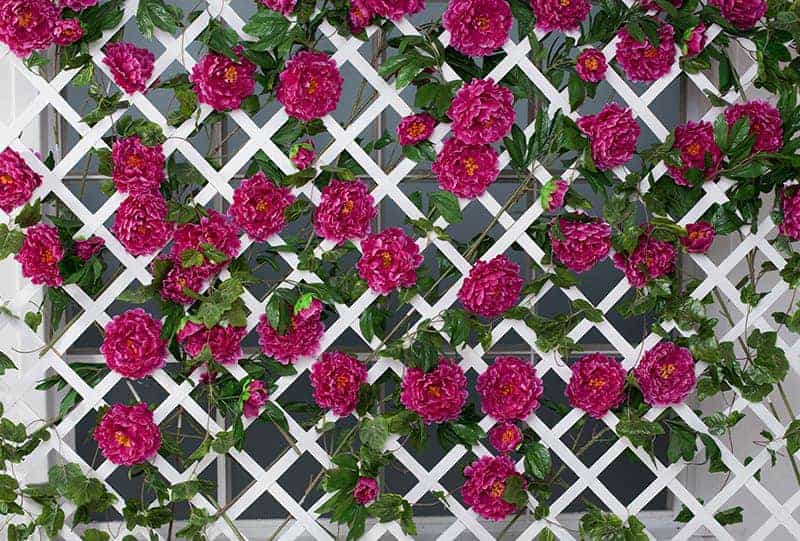
If you love flowers, then a flowering plant climbing up a lattice fence is one of the most decorative and beautiful ways you can create a boundary around your garden. This white painted lattice helps the plant really stand out, as it contrasts against the bright pink blooms and deep green foliage. By painting the lattice white, you also achieve a classic, New England style, which would look great in any cottage garden.
5. Lattice Archway
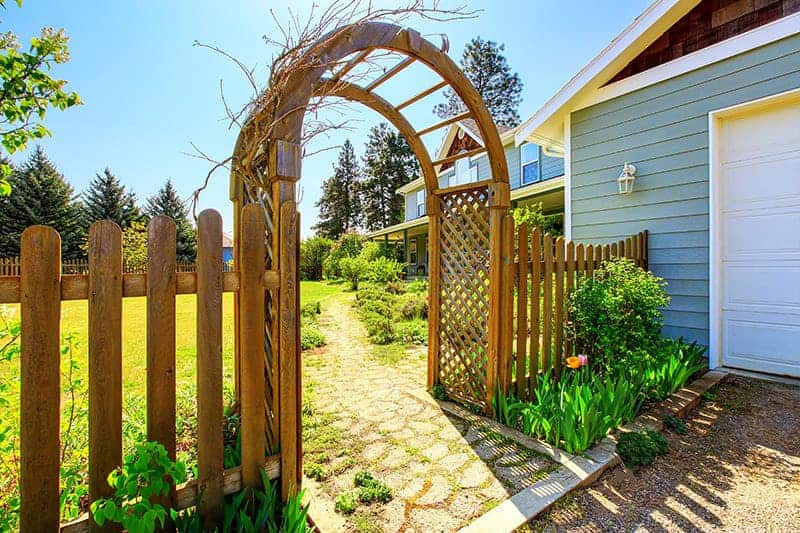
This lattice archway is decorative in itself, with a modern yet classic look. However, you could also plant climbing plants at its base and allow them to wind themselves around the lattice to create a different style. The natural wooden finish of the lattice gives a country feel to the design.
6. Wide Lattice Fence
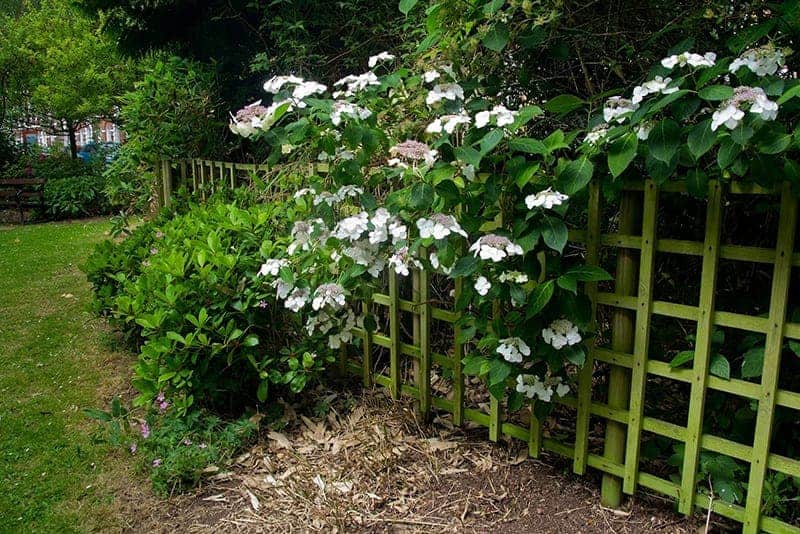
This fence is made using wooden lattice panels, with larger than standard gaps between each row. This is a good way to keep the visual line going outside of your property boundary, and not create such a definitive edge. It has the benefit of keeping children or pets safe inside, but it doesn’t feel too much like you’re blocking out the outside world. In this instance, plants have been trained to grow amongst the lattice, which helps it to blend in so that it appears to fit seamlessly into the space.
7. Multi-Purpose Panels
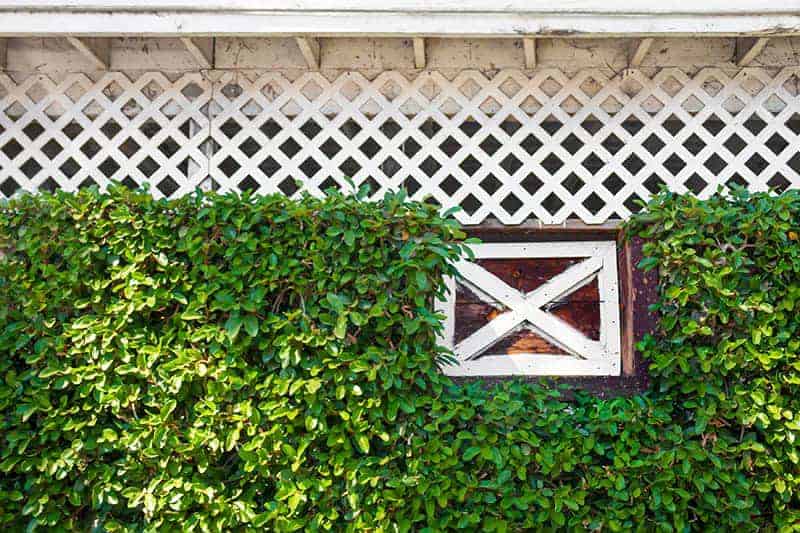
Lattice panels can be used for such a wide variety of projects in the garden or on the outside of the home. In this example, the tightly patterned lattice has been used to hide an area of the property that may have been unappealing. By painting it in the same color as the siding of your home, it helps the lattice to blend in and become part of the construction fabric of the property. The benefit of using lattice in this instance is that it is much less expensive than alternative methods, and it is easy to use.
8. Lattice Separators
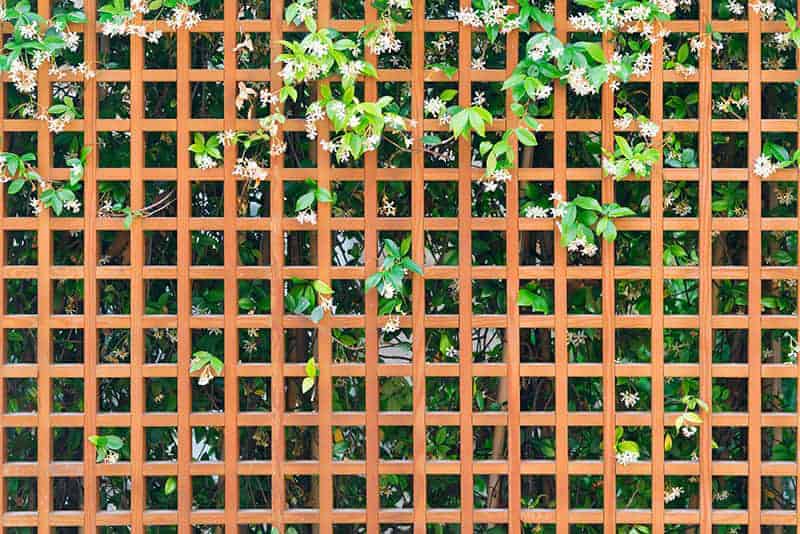
If you have a big yard, you can use lattice to separate different portions of your space. Lattice panels are an ideal material to use for this, as they can create defined sections in your garden without creating too much of a solid line like a fence panel or wall would. By allowing light through, lattice panels create a softer look than a solid alternative. Growing trailing plants up your lattice panels help to make the separate areas look more visually appealing, and help the lattice to look as though it belongs. Lattice is ideal for climbing plants as they are able to cling on to the narrow posts easily.
9. Small Garden Solutions
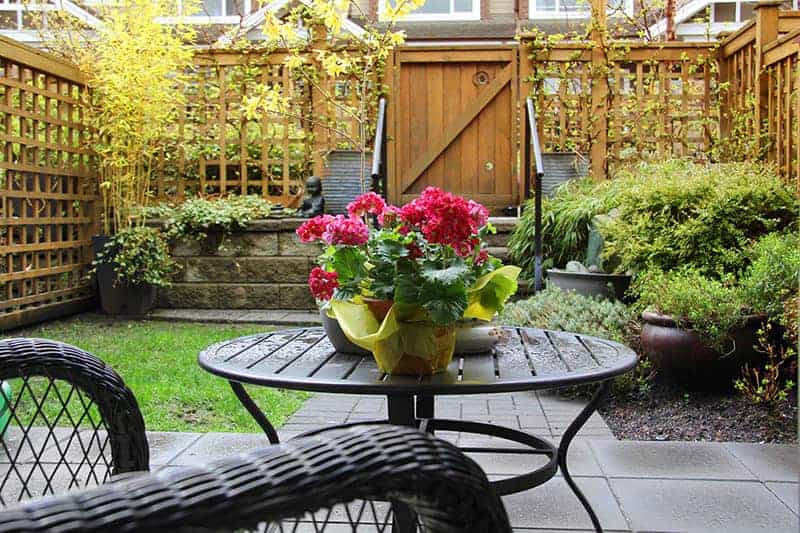
If you have a small garden, then using lattice panels for fencing will help to make the garden feel bigger than it actually is. By using lattice with a wide pattern, it stretches your eye line outside of your own space, creating the illusion of a larger garden. By comparison, a solid fence or wall in its place would create a very defined line and make the garden feel small and claustrophobic. Lattice fences like this are also perfect if you don’t want to block out your neighbors but you still want to define your boundary line. It’s a good compromise to create a secure garden without offending your neighbors.
10. Lattice Against Brick
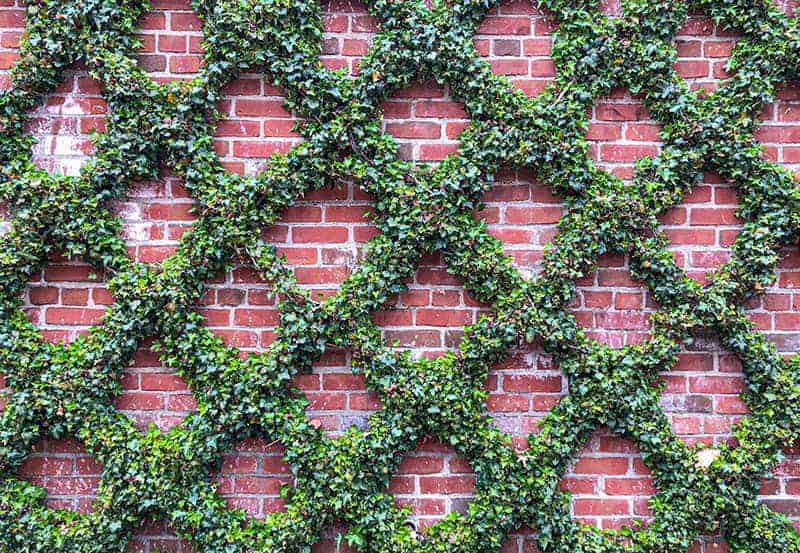
In this garden, ivy has been trained to entirely cover a wooden lattice panel before attaching it to the brick wall for decorative effect. This gives a really stunning look that would be quite the talking point. It creates a perfectly manicured look that is both interesting and neat. You could achieve this in one of two ways; either grow ivy over a freestanding lattice board, training it to tightly wrap itself around each post, or you could fix the lattice to the wall first and then plant ivy at its base. The problem with this second option is that the ivy grows so vigorously and will cling not just to the lattice, but also to the brickwork itself. In order to achieve this defined look, you will need to regularly tie the ivy to the lattice board and keep it from attaching itself to the brick, otherwise, it will spread in all directions and cover the bricks as well as the wooden lattice.
11. Metal Lattice for Home Grown Crops
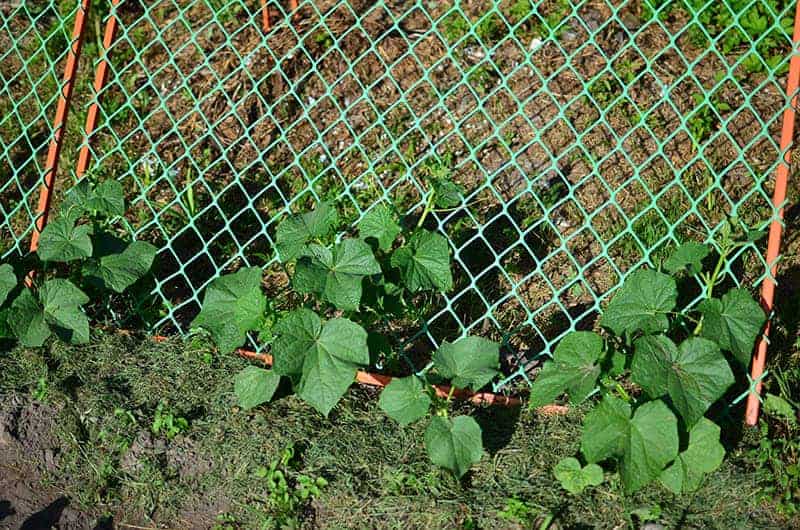
Lattice fences are most commonly seen in wooden options, but metal lattice fences are also useful in a variety of scenarios. Here, a metal lattice fence is being used to help vegetable and fruit plants grow. Metal lattice fences are actually easier to train plants to grow on, as there is more for them to cling on to and wrap their stems or tendrils around. The downside is that metal lattice doesn’t tend to be as aesthetically pleasing as wooden lattice fencing, but if you’re more interested in its functionality than what it looks like, then metal lattice fencing is a good option. Metal lattice is typically also more affordable than wooden lattice and requires less maintenance to keep it in good condition, as it will not need treating, staining, or painting to prevent it from rotting or fading over time.
12. Bamboo Lattice
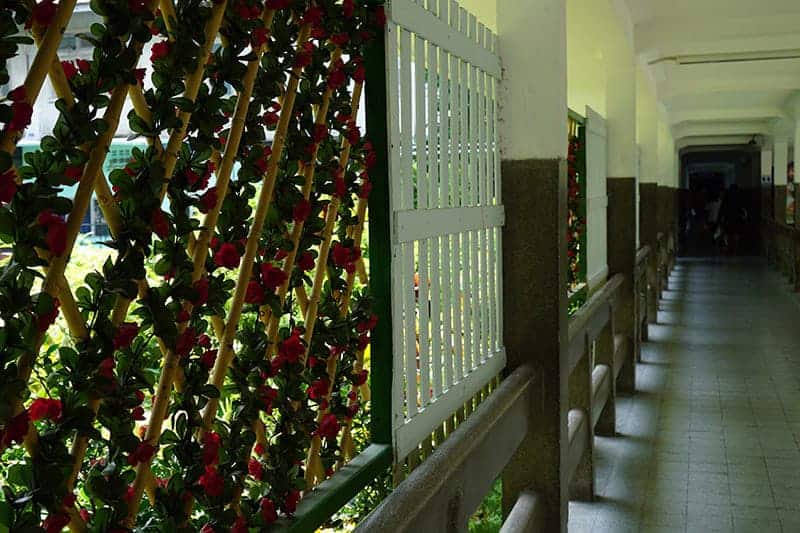
Bamboo lattice is a good alternative to regular lattice if you want a more natural look. Bamboo lattice can be bought from a DIY store or garden center, or you can also make it yourself without too much trouble. All you’ll need is a selection of bamboo lengths, a saw or sharp cutting device, and some string or metal ties to fix it all together. Lay the bamboo on the ground in a pattern you are happy with, then simply tie it in place at every section where the bamboo crosses over a different piece of bamboo. In this image, the bamboo lattice has been used to grow a climbing plant around the border of a property, creating a living wall. This has many benefits, allowing light into the space while also creating a fixed border to define the boundaries of the corridor and making it an enclosed space. The climbing plant makes the bamboo lattice not only functional but also decorative.
13. Lattice Tunnel
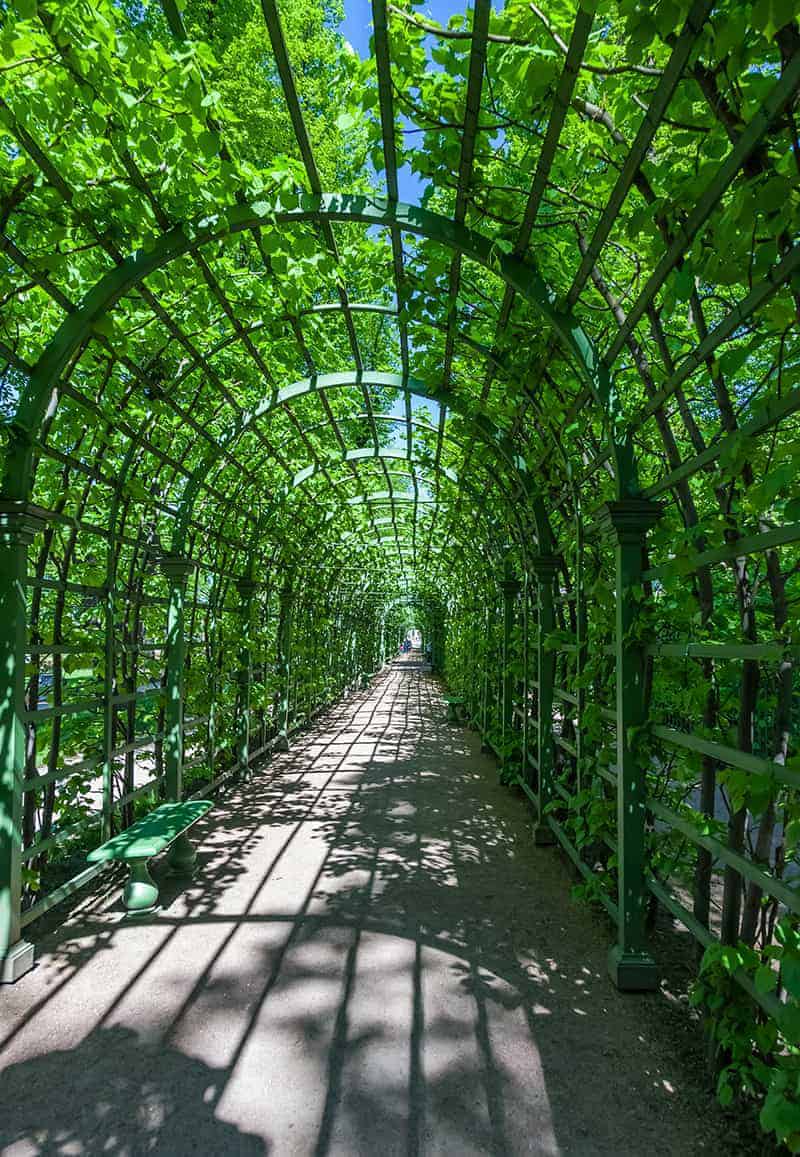
This entire walkway has been created using a lattice pattern. It is an archway that extends along the length of a path, creating almost a tunnel effect. A climbing foliage plant has been trained to grow all over the lattice, making the space feel green and natural, almost like you are walking through a magical forest. The lattice is a supporting structure that a climbing plant will naturally wrap itself around and enable it to spread out, but it is also great because it lets natural daylight into the space so that the ‘tunnel’ requires no lighting at all. By painting the lattice green, it blends into the foliage easily and helps maintain an enchanting feel in the space.
14. Brick Lattice
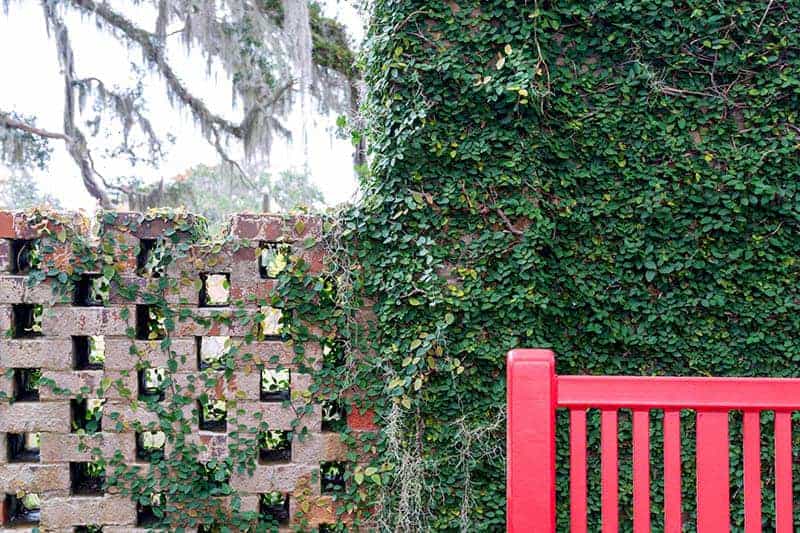
For a more permanent structure, you could create a lattice shape boundary out of bricks. This is perfect if you want to allow light and views through your wall, but don’t like how flimsy some wooden lattice boards can be. By using bricks, you have all the benefits of a brick wall, such as a durable construction that is longer-lasting, sturdier, and less maintenance than wood. But by laying the bricks in a lattice pattern, you won’t achieve the same solid boundary line you would ordinarily expect from a wall, and instead, light can stream in, and your view is extended beyond your property.
15. Wooden Walkway
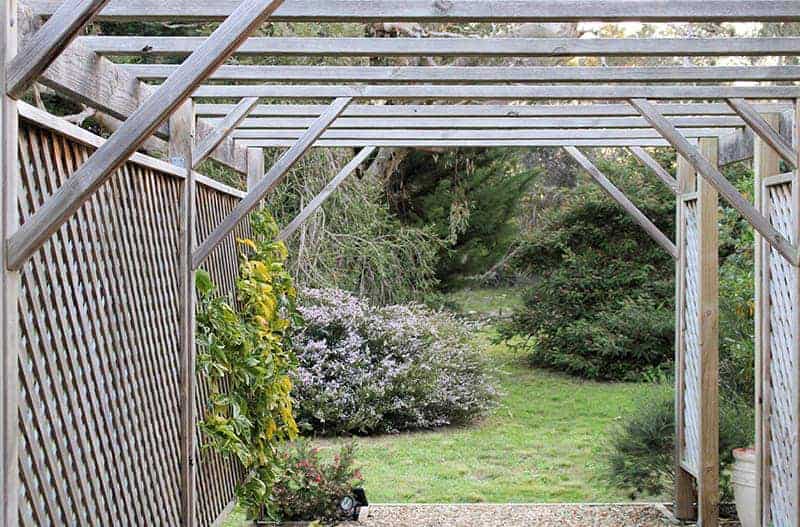
This walkway has been created using wooden lattice panels as the walls. This is a good idea for structures you create in your garden, because it doesn’t completely obstruct the view, and allows you to see beyond it. A solid fence panel, by comparison, would impede the view and also prevent light from getting in, making the space dark, shadowy, and cold. Lattice panels are also less expensive than fence panels as less wood is used, therefore making garden construction projects more affordable. Lattice also provides a space for plants to climb along, or it can be used to support tall plants that may need to be tied to something.
16. Lattice Gate
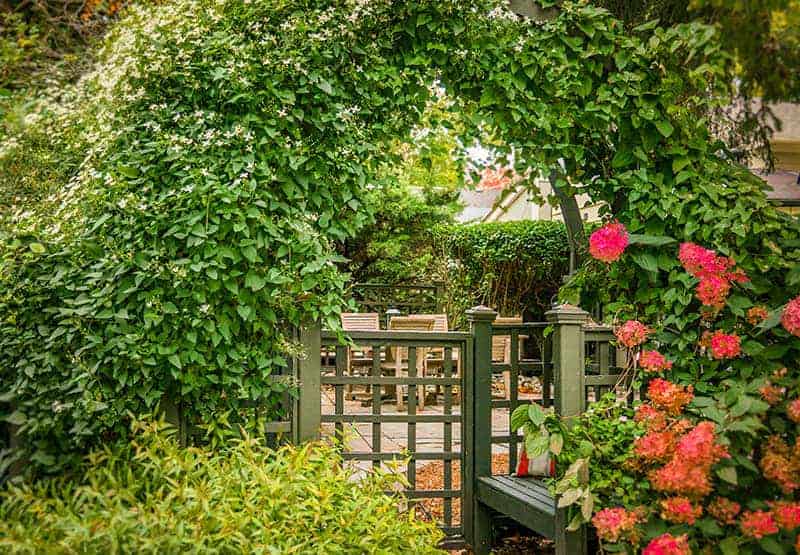
This lattice gate has been used to divide up two portions of a garden. You may want to do this to keep pets on one side of the garden, or to keep children in an enclosed area where you can see them. By using a lattice gate, you can ensure a certain area of your garden is safe and secure, without visually obstructing the view to the other side of your garden. With a lattice gate, you can still enjoy seeing both sides of the garden, no matter the side you happen to be on.
17. Lattice Seating Area
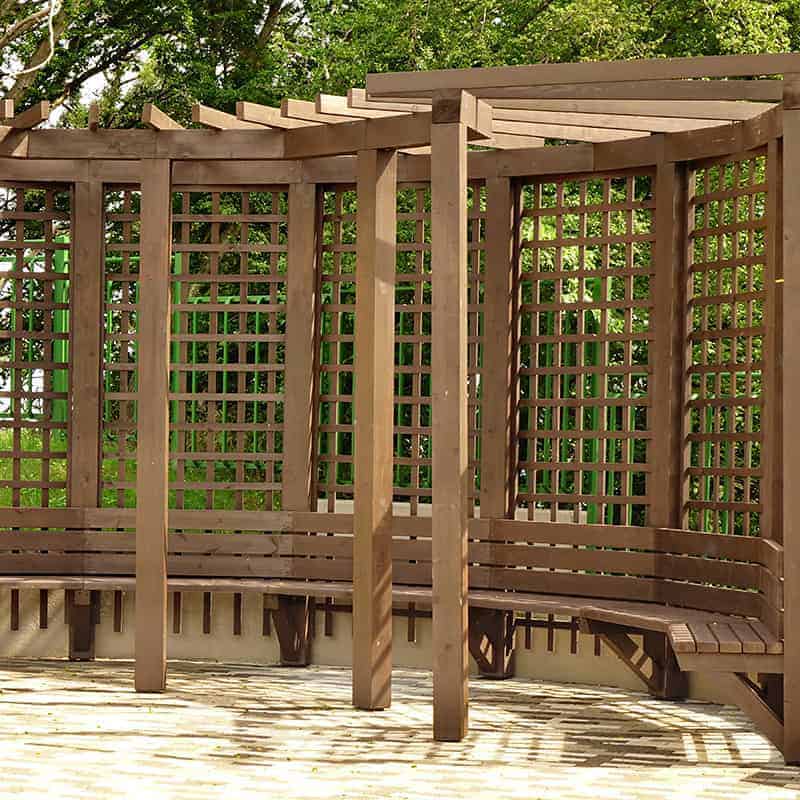
This seating area has used wooden lattice panels as walls to create an enclosed space, but the advantage of using lattice is that it defines the seating space without closing it in. The gaps in the lattice allow light and air through to make the space bright and airy, and they also allow people to see through to the other side so that the other areas of the garden can be enjoyed and not blocked out. You could also allow climbing plants to grow on this structure to help it blend into the space and make it more visually interesting.
Related Content
-
Tree Care Tips & Techniques
-
All about Spider Mites and How to Get Rid of Them
Home growers and gardeners tend to be quick to learn one of the most uncom... Read More
-
23 Cheap & Amazing Garden Edging Ideas You Can Try
Stuck for inspiration on ways to tidy up the perimeter of your garden? A n... Read More
-
10 Best Soil Test Kits Reviews – Essential Equipment To Examine Your Garden Soil
Taking care of a garden can be a suitable hobby but also a sense of pride.... Read More

